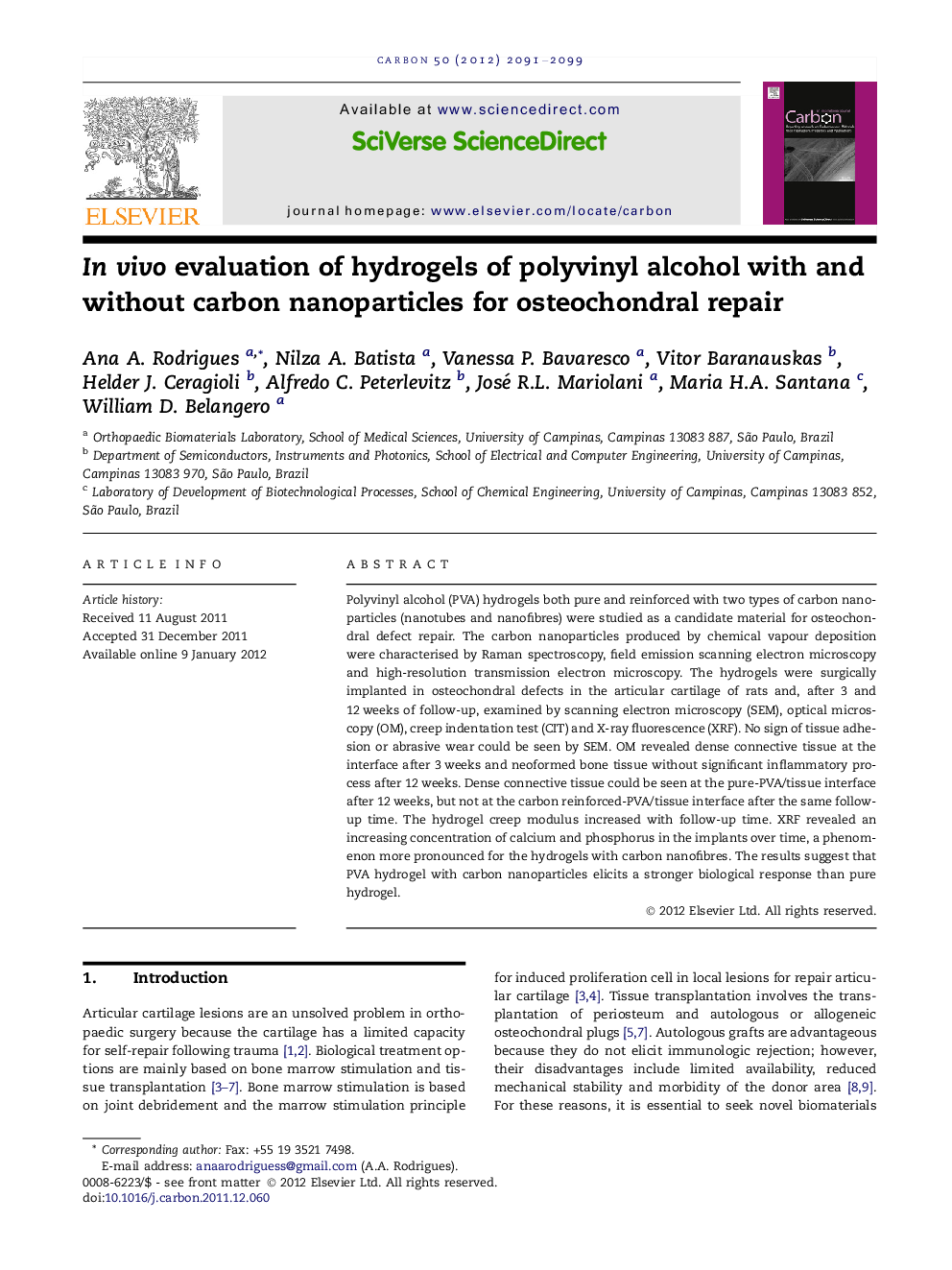| Article ID | Journal | Published Year | Pages | File Type |
|---|---|---|---|---|
| 1415163 | Carbon | 2012 | 9 Pages |
Polyvinyl alcohol (PVA) hydrogels both pure and reinforced with two types of carbon nanoparticles (nanotubes and nanofibres) were studied as a candidate material for osteochondral defect repair. The carbon nanoparticles produced by chemical vapour deposition were characterised by Raman spectroscopy, field emission scanning electron microscopy and high-resolution transmission electron microscopy. The hydrogels were surgically implanted in osteochondral defects in the articular cartilage of rats and, after 3 and 12 weeks of follow-up, examined by scanning electron microscopy (SEM), optical microscopy (OM), creep indentation test (CIT) and X-ray fluorescence (XRF). No sign of tissue adhesion or abrasive wear could be seen by SEM. OM revealed dense connective tissue at the interface after 3 weeks and neoformed bone tissue without significant inflammatory process after 12 weeks. Dense connective tissue could be seen at the pure-PVA/tissue interface after 12 weeks, but not at the carbon reinforced-PVA/tissue interface after the same follow-up time. The hydrogel creep modulus increased with follow-up time. XRF revealed an increasing concentration of calcium and phosphorus in the implants over time, a phenomenon more pronounced for the hydrogels with carbon nanofibres. The results suggest that PVA hydrogel with carbon nanoparticles elicits a stronger biological response than pure hydrogel.
